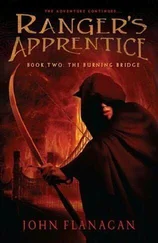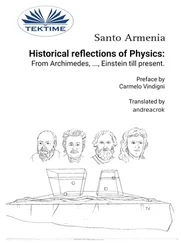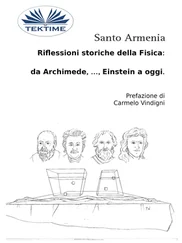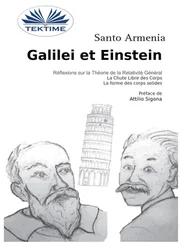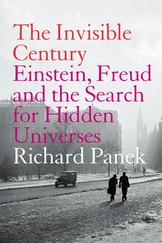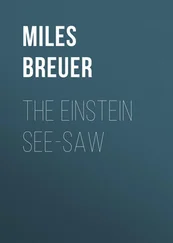Alice smiled. George made it sound as if their actions that Saturday night had been a thoroughly planned course of action, a careful set of logical steps, rather than the slightly beery culmination to an evening of dancing at P.J.’s. And he didn’t mention that after they’d found the thing, they’d gone to Alice’s house and screwed like demented weasels. He seemed to imply that at least half of the insights that had led to finding the Snark had been hers. George was a gentleman, but he was unduly generous. She felt embarrassed, thinking about her half-finished techno-disaster thriller.
George showed a close-up image of the lead-glass scintillator that held the Snark, made at a sufficiently low light level that the blue glow was visible. This was followed by graphs showing the wavelength spectrum of the light and its time structure. Then he described the encoded message, including all twelve of the bitmap images it contained. Finally George described the plan for transmitting a message in the other direction, mentioning that one of the following speakers would describe the plan in more detail.
There was thunderous applause in the auditorium as George concluded. The SSC director stood and asked if there were questions. Alice shifted in her seat, wondering what the question period would bring. She could see that Jake was holding his hand stiffly in the air.
The director called on the first questioner, a theorist in the front row who asked a detailed question about the energy and momentum balance in the reconstruction of the Snark event. George answered the question and projected a new diagram that provided additional information.
Another questioner, an experimentalist for the LEM group whom Alice recognized, asked skeptically about the mass and charge of the Snark and how these related to its stopping power. George quickly admitted that there was a problem here and projected a graph showing an analysis of the Snark’s ionization track in the various parts of the LEM detector. He followed this with a graph of the time-of-flight analysis of the Snark event. “If we assume the Snark is an object having a Planck-scale mass with a velocity of beta equals point-oh-two,” he finished, “then the observed ionization should have been insufficient to bring it to rest. We suspect that the previously unknown color ionization process, the process that produced the twenty-nine jets we saw, also served to decelerate the Snark. Roger has suggested that there may have been neutral particles involved in the deceleration, which we wouldn’t track. We would be interested in other suggestions bearing on this issue.”
The third questioner, one of the accelerator engineers, wanted a more complete explanation of what had been learned from the bit-map diagrams. In particular, what could be learned about wormholes and about the location from which the message was being sent? “First let me deal with the wormhole question,” said George. “The wormhole, or ‘Einstein-Rosen bridge’ as we used to call it when I was in graduate school, is almost as old as Einstein’s general theory of relativity itself. The mathematics of general relativity indicates that when space becomes sufficiently curved and distorted, a three-dimensional tube can form that connects one region of space-time with another, a sort of spatial shortcut.” George projected a diagram of a surface curved back on itself, with a tube connecting one region of the surface to another.
Alice was amused. George had spent long hours fetching papers on wormholes from electronic preprint databases, studying the papers in great detail, complaining about the unintelligible math, and bombarding Roger with questions. Now, a week later, he sounded like an expert who had been working in the field for years. Perhaps he had learned something from his association with Jake.
“In 1962,” George continued, “Fuller and Wheeler showed that a wormhole is so dynamically unstable that it would pinch closed before any light, matter, or information could pass through it. Then in 1988, Morris, Thorne, and Yurtsever demonstrated that a Casimir-effect capacitor could stabilize a wormhole, preventing its pinch-off. Subsequent work of Visser and others demonstrated that the same stability could be achieved in other ways. From what we now gather from the Snark diagrams, there are ways of stabilizing a wormhole that we had not previously considered. Professor Home will discuss this later.”
“But what’s at the other end of the wormhole? In particular, what’s this ‘other universe’ business you mentioned?” the questioner persisted. “Are we talking Everett-Wheeler probability branches or shadow-matter worlds or what?”
“None of the above,” said George. “Professor Axel will address the cosmological aspects of the Snark message later today, but let me attempt a lowbrow experimentalist’s answer to your question. The ‘inflationary scenario’ describing the early history of the Big Bang is a synthesis of cosmology and particle physics. But up to now, there seemed no hope of attempting any experimental verifications of its predictions. The scenario described the very early universe as a region of expanding space saturated with an almost unimaginably large quantity of energy. As that space expands, a local irregularity occurs, perhaps around a single magnetic monopole, and a sort of bubble forms. Inside that bubble is what we would call normal space, while outside is the energy-saturated space in which the strong, electroweak, and gravitational forces are indistinguishable. The walls of the bubble, driven by the energy liberated in this transition from one kind of space to another, move outward faster than the speed of light. That bubble of space is what became our universe. We and all the space we can reach, all the planets, stars, galaxies, and galactic clusters are inside it. But a larger megauniverse, the true cosmos, remains outside the bubble.”
Not bad, thought Alice, taking notes. Now George is an expert on cosmology, too.
“The inflationary scenario,” George continued, “allows for the possibility of many such bubble universes, each isolated from the rest, each walled off in its own pinched-off isolation from the others and from the greater megauniverse in which they all exist. It now appears that through the Snark, we are receiving a message from intelligent life that inhabits another bubble universe. Apparently it’s easier to contact intelligent life in other universes than it is in your own. That’s the conclusion we’ve reached from studying the Snark diagrams. Inflationary cosmology seems to have been experimentally confirmed.” The questioner nodded and sat down.
Alice observed that there were fewer hands raised now; the audience must be running out of questions. The director called on Jake. He stood and slowly turned to face the audience. “There is a time to push your own work, to toot your own horn,” Jake began. “This, however, is not such a time. A leading member of my LEM team, my friend and colleague Professor George Griffin has made a momentous, unprecedented, and completely unexpected discovery. A discovery which, as he has graciously pointed out, was made possible because of this great accelerator and because of the remarkable sensitivity and measurement capabilities of our LEM detector. I would like to congratulate Professor Griffin on his work. Two weeks ago he tried to interest me in this Snark event, and I blush to admit that I dismissed it as uninteresting background.” He turned to the stage and smiled at George.
“And background it is, in a certain sense,” he continued. “The Snark is not a fundamental particle, not an object of the kind this great facility was built to study. It is something unique, something far stranger. It is an alien artifact, an object whose very nature we can only guess at from the meager clues that their messages have so far provided.”
Читать дальше



